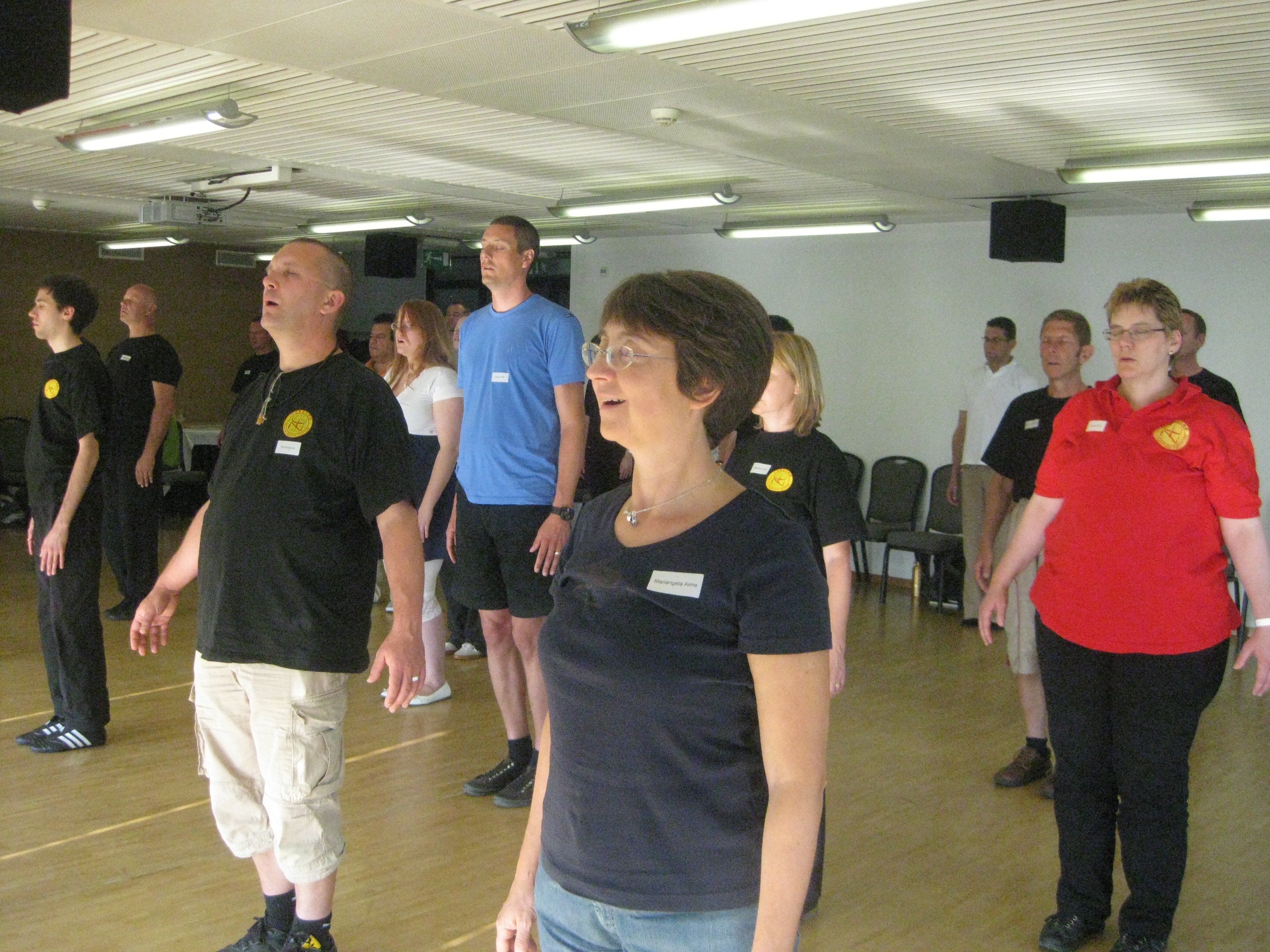APPLYING THE REINCARNATION STRATEGY TO INVENTION, INNOVATION AND TEACHING

Wouldn't it be lovely if by pressing a button you could change the red dress into blue or yellow?
Question 6
Can “Borrow a corpse to resurrect the soul” be used as an effective strategy for product or service innovations? And if so, how?
If there is room for an add-on question (similar to Mark Sisook’s question): Can this strategy be applied to "innovation" in teaching?
Some examples of innovations which might have benefited from this strategy are as follows:-- Wearable Fitness Trackers (Fitbit and others) -- they borrow the shape of a watch, but have a different purpose (track your movement and other data); Messenger pigeons -- in the past used to transport messages/letters, they have been "re-purposed" to track/measure geographical, meteorological and other data; Washing machine -- one of the first mass-produced washing machine (the Miele Hera) was based on a butter-machine.
Sifu Andrea Zilio
Answer
Yes, “Borrow Body to Reincarnate” can be used as an effective strategy for product or service innovations.
We may, for better understanding of how we may benefit form this strategy, classify inventions related to this strategy into three categories:
1. Inventions analogous to the strategy but the inventors may not be aware of it.
2. Inventions that are development or modifications of existing appliances.
3. Inventions that are direct results of applying this strategy.
There is often overlapping between the categories. We should not be worried about the overlapping, like worrying whether the invention of a wearable fitness tracker should be placed under category 1 or 2, or even 3 above.
The classification is not a scientific definition, which will limit its usefulness. As mentioned earlier, and it is worthwhile to emphasize this point, the classification is for our better understanding so as to have more benefits. Many kungfu and chi kung classifications are of this kind.
Whether the invention of a wearable fitness tracker falls under the first, second or third category above depends much on the inventor original state of mind at the onslaught of his creation.
If, in a flash of inspiration, he suddenly realized that a person anxious about his fitness when jogging or just shopping in a supermarket, could trace his fitness status if he could carry a machine with him, then his invention belonged to the first category.
If, while eating his dinner alone at a restaurant, the inventor intellectualized how the steak he was eating would affect his fitness, and then looked at his watch to check the time for his subsequent appointment, the idea of modifying a watch from telling the time to telling the fitness status of a wearer might occur to him. His intention, therefore, fell into the second category.
Incidentally this example also shows that intellectualization can be useful. In fact it is useful when used fruitfully. It is detrimental when used during chi kung or kungfu training as it would bring a practitioner out from his heightened state of consciousness, and also making the practitioner stressful. Our second golden rule of practice, don’t intellectualize, does not mean that intellectualization is not useful, but highlights that it is detrimental during chi kung and kungfu training, or carried out excessively and purposelessly.
Returning to the wearable fitness tracker inventor, his invention falls under the third category if his state of mind during the invention is as follows. He was thinking, or fruitfully intellectualizing, of inventing an appliance that people could carry about on their person to measure their fitness status.
He might, for example, have thought of a pen, a wallet, a ring, a watch and a pair of shoes. After much fruitful intellectualization, and if he survived from being clinically depressed due to the prolonged intellectualization, even when it was fruitful, he came to the conclusion that the watch would be the best “body” to “reincarnate” his invention.
All the other innovations or inventions you mentioned, followed the same explanation above, which also shows how the strategy can be effectively used for product or service innovations.
The inventors might not have heard of the strategy, “Borrow Body to Reincarnate”, but if they had learnt it at a course, like at the Valentine courses in Ireland, they would be more cost-effective.
On the other hand, for those who wish to be inventors, they can apply the three categories above to help themselves.
The three categories are in descending order, with the smartest inventors in the first category.
“For the sake of giggles” (to quote Anthony Spinicchia), suppose you are not very smart, which, of course, is not true, but you want to invent an appliance or any product or service innovation. So you start with the third category, which is the most cost-effective for those who are not so smart.
There are two approaches. You can start with your proposed invention and look around for a suitable “body” to “reincarnate”. Or you select the most suitable “body” from a range of choices, and think out an invention to “reincarnate”.
Suppose you take the first approach and want to invent a special dress which you can wear at a lakeside in summer, but still can keep you warm when you go up a mountain. So you look around for a suitable “body’ to “reincarnate”.
You find one in a heated bed, the type of bed with electric lining attached to the electricity supply of the house that can heat it up in winter. Instead of a house electricity, you can use a powerful battery hidden under the clothing of the wearer. When you are at a lakeside enjoying the fresh air, you turn off the power supply. When you go up a mountain to enjoy some snow, you turn on the power supply, still wearing the same light dress.
But as a responsible person, you must first of all find out whether this special dress has any unfavorable effect on a wearer’s health. If it does, you throw out the intended invention even if it might bring you a lot of money.
Or you may use the second approach. You look around various “bodies” to find one suitable for “reincarnation” or invention. You may consider cars, bicycles, computers, ear rings and clothing.
Eventually you decide on clothing, because not everybody has a car, a bicycle, a computer or ear rings, but everyone wears clothing, except when he or she is enjoying a shower.
Next you have to work out how you will use the “body” to “reincarnate”. You may come out with the special dress like the one described above. Or instead of changing temperature, you may have a special dress that changes colours. Press a button, and you have a yellow dress. Press another pattern, the same dress you are wearing changes into blue. You friends may think you are a magician.
You may also change design with the clothing. Tug in the collar, and you have an open-neck T-shirt for lakeside wear. Pull it out, and you look like a China doll. Release some hidden buttons and you have a flowing gown. Fold the long ends in and you have a mini-skirt. You may also take out the dress and fold it into a handbag!
All these inventions, or at least ideas of the inventions, can come to an inventor or innovator if he applies the strategy, “Borrow Body to Reincarnate” even when he is not very smart.
If he is smarter, he can save much time and effort, though the process is similar. He looks at an ordinary dress, and thinks to himself, “I can develop or innovate the dress to make it change temperature, or colour or design.”
If he is very smart, the ideas flash upon him spontaneously. On hindsight he may relate his invention or innovation to the “Borrow Body to Reincarnate” strategy. Our Zen courses are meant to train this kind of smartness. Our 36 Strategies courses are meant to put this smartness into application.
Can this strategy be applied to "innovation" in teaching?
Yes, this strategy, and any other strategy, can be applied to innovation in teaching. In the Ireland courses we shall learn and practice how to do so, not just in teaching but in any endeavor.
If we examine our teaching we can find many innovations that can be traced to this strategy. In our case our innovations belong to the first category. The innovations are made to meet expedient needs without any conscious thought of the strategy. It is only on hindsight that we find co-relation.
We are very smart. It is not because of vain-glory that I mention this, but to highlight that being very smart is a logical result of our training. If we are not very smart, then we have failed to realize a main training aim.
Regional courses, for example, is a manifestation of this strategy, related to week-end motivational and stress-management courses given to top executives. The results are incredible. Other students spend months or years to develop internal force or apply kungfu for sparring, our students spend just a few days. Indeed some students who are top executives, told me that they benefited more in marketing and business management from a few days of our Zen and Strategies courses than they had in their expensive business courses.
The venue of our lessons is also a manifestation of the strategy. Instead of building our own halls, we rent space from hotels or community centres for our lessons. Yes, this strategy, and any other strategy, can be applied to innovation in teaching. In the Ireland courses we shall learn and practice how to do so, not just in teaching but in any endeavour.
In our teaching methodology, we often use this strategy, usually unconsciously. When you teach your students the Three-Circle Stance, for example, you may use the image of a pyramid. Recently when I explained that the different types of force in Taijiquan, like ward off force, roll back force, etc, was due to their application and not to their nature, I used this strategy in an analogy of money as rent-money, food-money, etc.
Some of our instructors, who are school teachers, use our teaching methodology in their school teaching, and have found it very effective. The structure of our combat sequences, for example, can be effectively used for teaching English conversation.
Applying the strategy of “Borrow Body to Reincarnate” is best represented in using analogy in teaching. Many people, including those who have practiced chi kung for many years, mistakenly thinking that if they have some right techniques they could overcome some illness. In the earlier years of my Question-Answer Series, many people wrote to me asking me to supply them some techniques to overcome cancer. Actually this was quite ridiculous. If this could be done, there wouldn’t be so many people suffering from cancer.
Many people may not comprehend if I tell them that it is skills not techniques that are crucial in chi kung healing. They would have a clearer understanding if I use an analogy. I explain that they may learn the best techniques from an e-mail or a book on swimming or driving, but without appropriate skills they would still be unable to swim or drive even when they have the best techniques. This is “borrowing a body to reincarnate”.

An effective way to explain that it is skills and not techniques that are important in chi kung training is to use an analogy of swimming or driving
The question and answer are taken from the thread More Fun! 36 Strategies in the Shaolin Wahnam Institute Discussion Forum.
